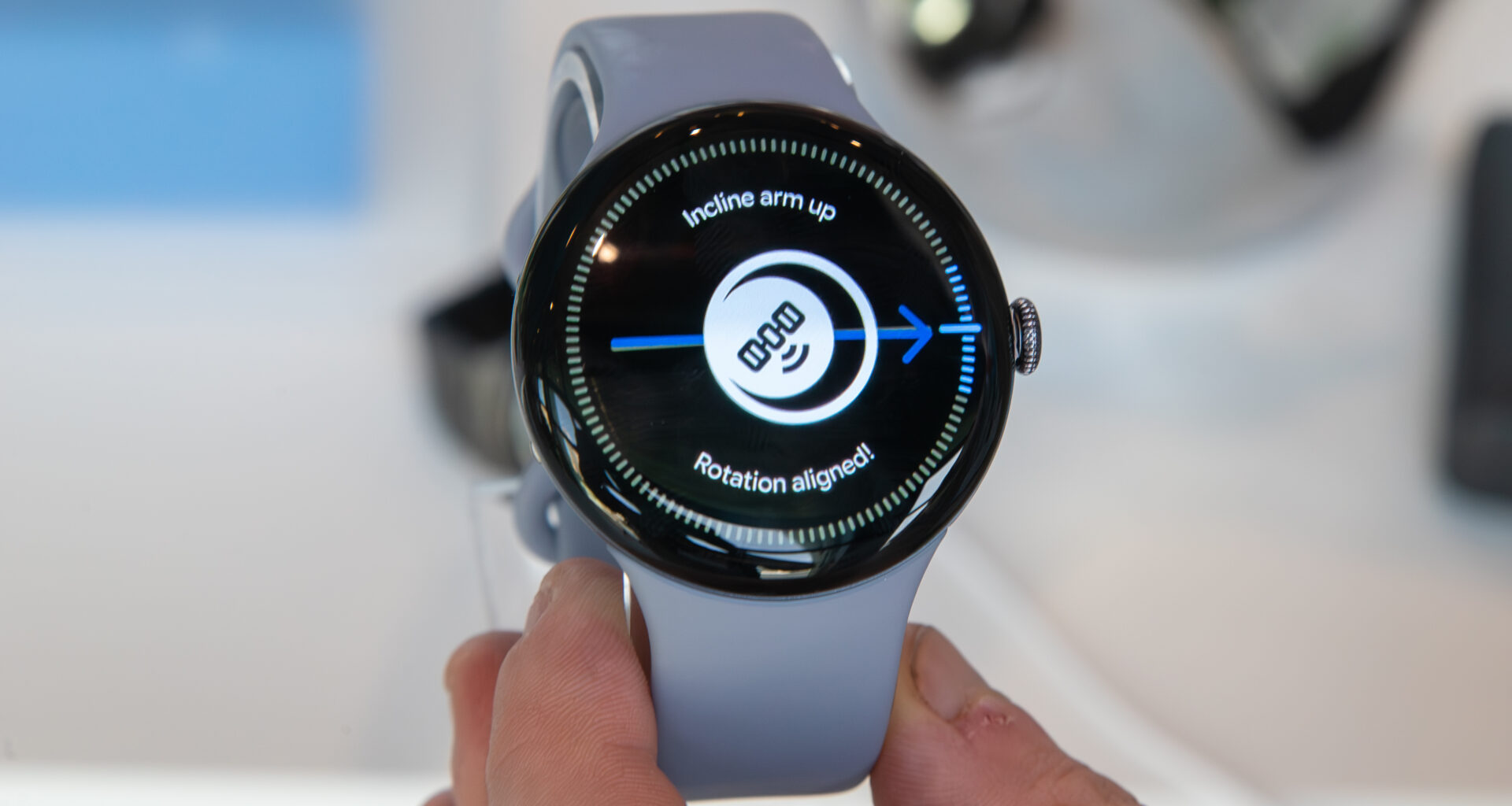- Qualcomm announced the Snapdragon W5 Gen 2 and W5+ Gen 2 on Wednesday.
- Like the Gen 1, the W5 Plus Gen 2 uses a 4nm SoC with four Cortex-A53 cores, a Cortex-M55 coprocessor, and an Adreno 702 GPU.
- This generation is 20% smaller and supports both satellite messaging and enhanced dual-band GPS tracking.
- The Google Pixel Watch 4 is the first smartwatch to use the Snapdragon W5 Gen 2.
Qualcomm has revealed the Snapdragon W5 Gen 2, the new smartwatch system-on-chip (SoC) for Wear OS watches that powers the Pixel Watch 4. And while we’d hoped for a more robust power upgrade, the new satellite messaging and better efficiency are more significant than you might think.
The 2022 Snapdragon W5 Gen 1 delivered 2X performance and 50% improved efficiency in a 30% smaller size than its previous Wear 4100 chip. This 2025 model — which uses the same 4nm SoC, 22mm coprocessor, and GPU — is a more iterative update, with a 20% smaller footprint and 20% efficiency boost.
What’s most exciting is that the Snapdragon W5 Gen 2 adds support for Skylo’s Narrowband Non-Terrestrial Network (NB-NTN), enabling the Pixel Watch 4 to send SOS satellite messages with your location if you’re in a cellular dead zone.
You may like
Qualcomm explained in a briefing that its wearable satellite messaging is quite restrained compared to mobile satellite SOS, which supports voice calling; this version supports two-way messaging and location sharing, but without draining your watch’s limited battery capacity.
Image 1 of 3
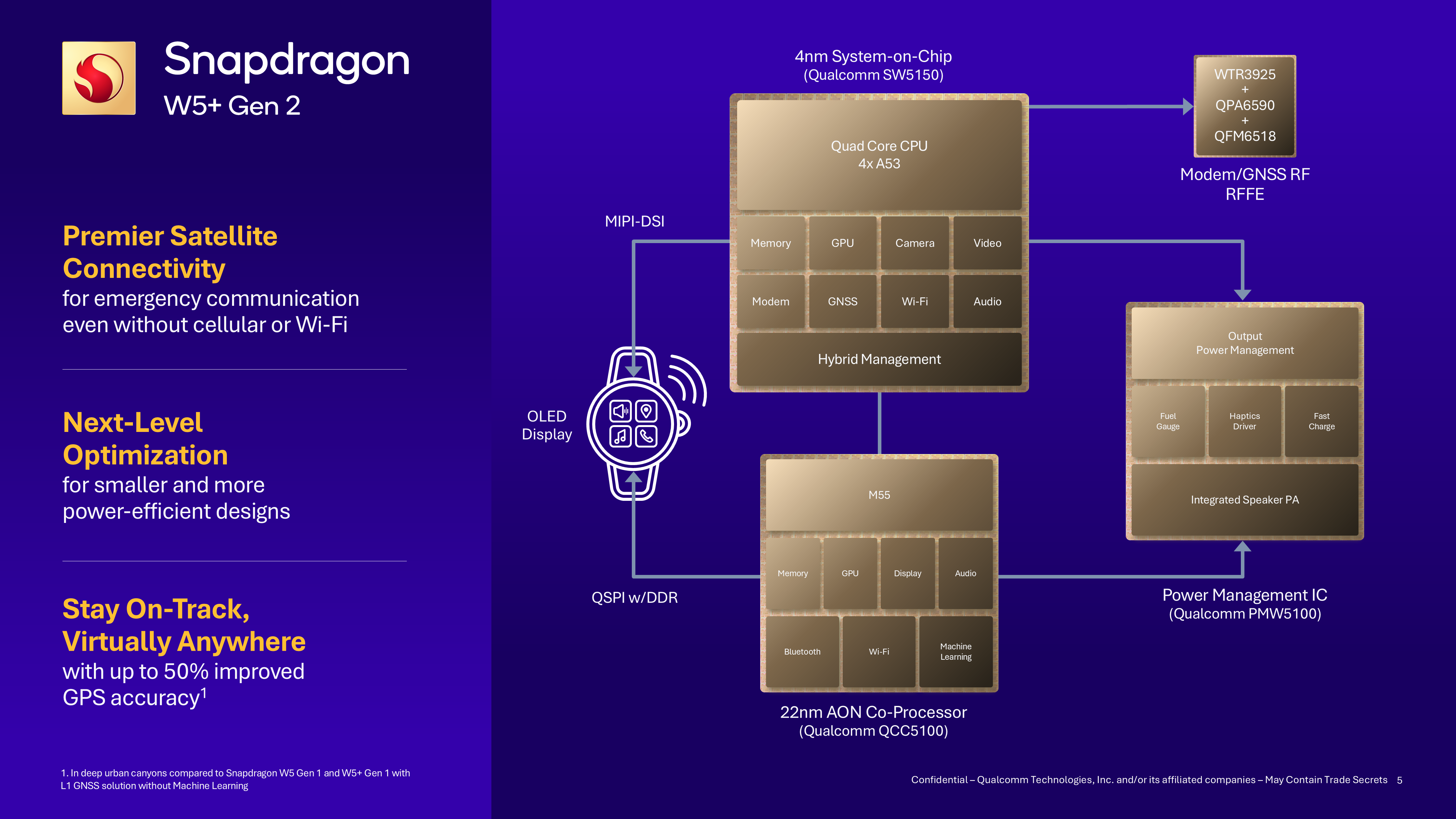 (Image credit: Qualcomm)
(Image credit: Qualcomm)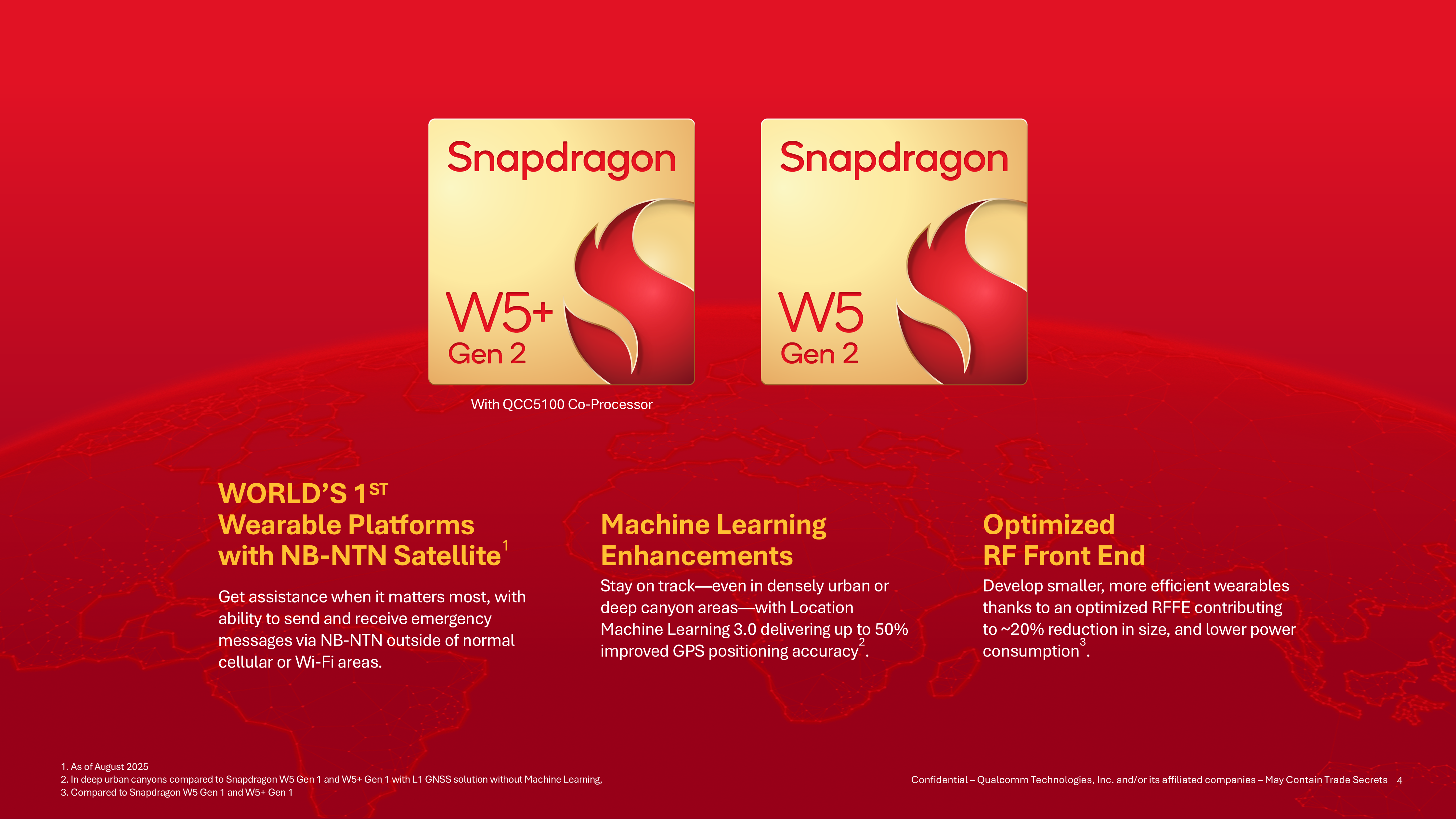 (Image credit: Qualcomm)
(Image credit: Qualcomm) (Image credit: Qualcomm)
(Image credit: Qualcomm)
This makes Wear OS the first wearable OS to support satellite messaging, says Qualcomm VP & GM of Wearables Dino Bekis, and “this technology can allow users to stay connected in the most remote locations, sending and receiving critical messages via satellite” for “enhanced safety.”
In addition, the new Radio Frequency Front End (RFFE) enables “Location Machine Learning 3.0” for GPS tracking. Essentially, the chip is smarter at taking your GPS data and course-correcting it to your actual location.
Qualcomm says this algorithm makes Snapdragon W5 Gen 2 watches with dual-band GPS 50% more accurate than Gen 1 watches with L1 GPS and no machine learning capabilities, particularly in “densely urban or deep canyon environments” where signals are frequently obstructed.

(Image credit: Derrek Lee / Android Central)
The Google Pixel Watch 4, the first in its lineup to add dual-band GPS and satellite SOS, will benefit from this GPS boost, both for workout results and for providing your exact location in emergencies.
This new model measures 12.3mm — same as the Pixel Watch 3 — despite a significant increase in battery capacity for 25% longer battery life. The Snapdragon W5 Gen 2’s smaller footprint allowed Google to prioritize upgrades in other areas, even if its performance speed is unchanged.
Notably, the Pixel Watch 4 uses a “new” Cortex-M55 coprocessor, which it says is “25% faster at half the power” than the Cortex-M33 in the Pixel Watch 3 and 2. The Snapdragon W5+ Gen 2 also uses the M55, but both Qualcomm and Google insist that the Watch 4 uses the W5 Gen 2, not the “Plus” version.
Either way, the Pixel Watch 4 is capable of more on-device AI smarts than past models, such as smart replies to messages. So evidently, this new co-processor pays off, even if the main cores are unchanged.
Hoping for a more substantial Snapdragon W5 upgrade down the line
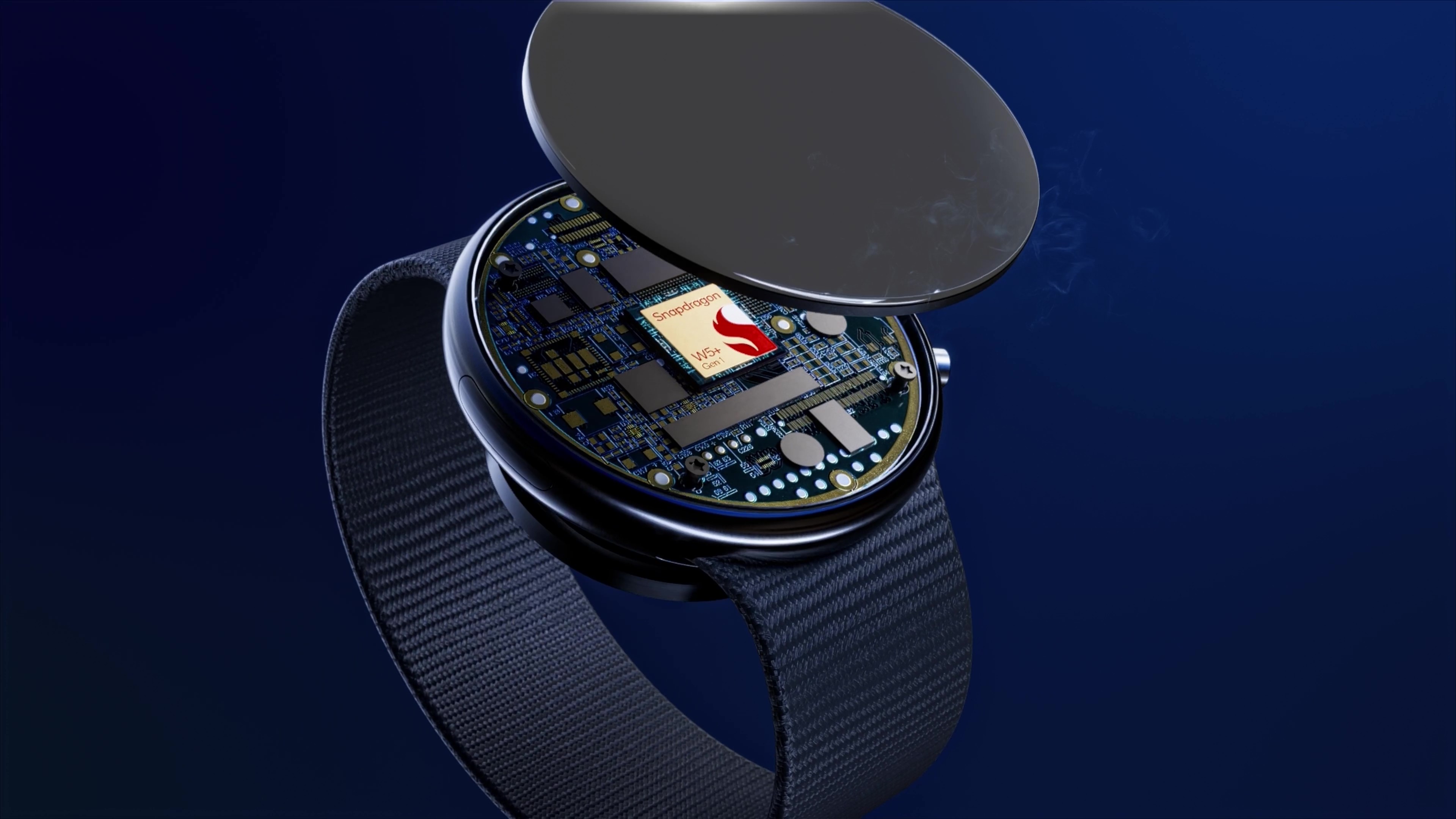
(Image credit: Qualcomm)
This new W5 Gen 2 chip makes significant strides for “connectivity, efficiency, form factor, and location tracking,” according to Qualcomm. But we previously heard that Qualcomm and Google teamed up on a RISC-V chip for wearables, and last year, Dino Bekis told me at the Snapdragon Summit about plans for a new wearable chip with a significant performance boost for computing and AI.
Why didn’t we see a more significant generational update with newer cores? Maybe smartwatch makers didn’t see the need for more power, caring more about efficiency and new features. Perhaps Google and Qualcomm needed more time to make RISC-V compatible with Wear OS.
When asked why Wear OS makers didn’t seem to be demanding more powerful SoC, the Qualcomm rep said that they wouldn’t discuss their roadmap, but didn’t rule out the possibility of a more powerful chipset in the future.
For now, considering that older Android watches can already run Gemini commands, they may be able to maintain this current level of performance for the next couple of years. And the Pixel Watch 4 intrigued us with its on-device smart replies and Gemini Raise to Talk, which we tested in our Pixel Watch 4 hands-on.
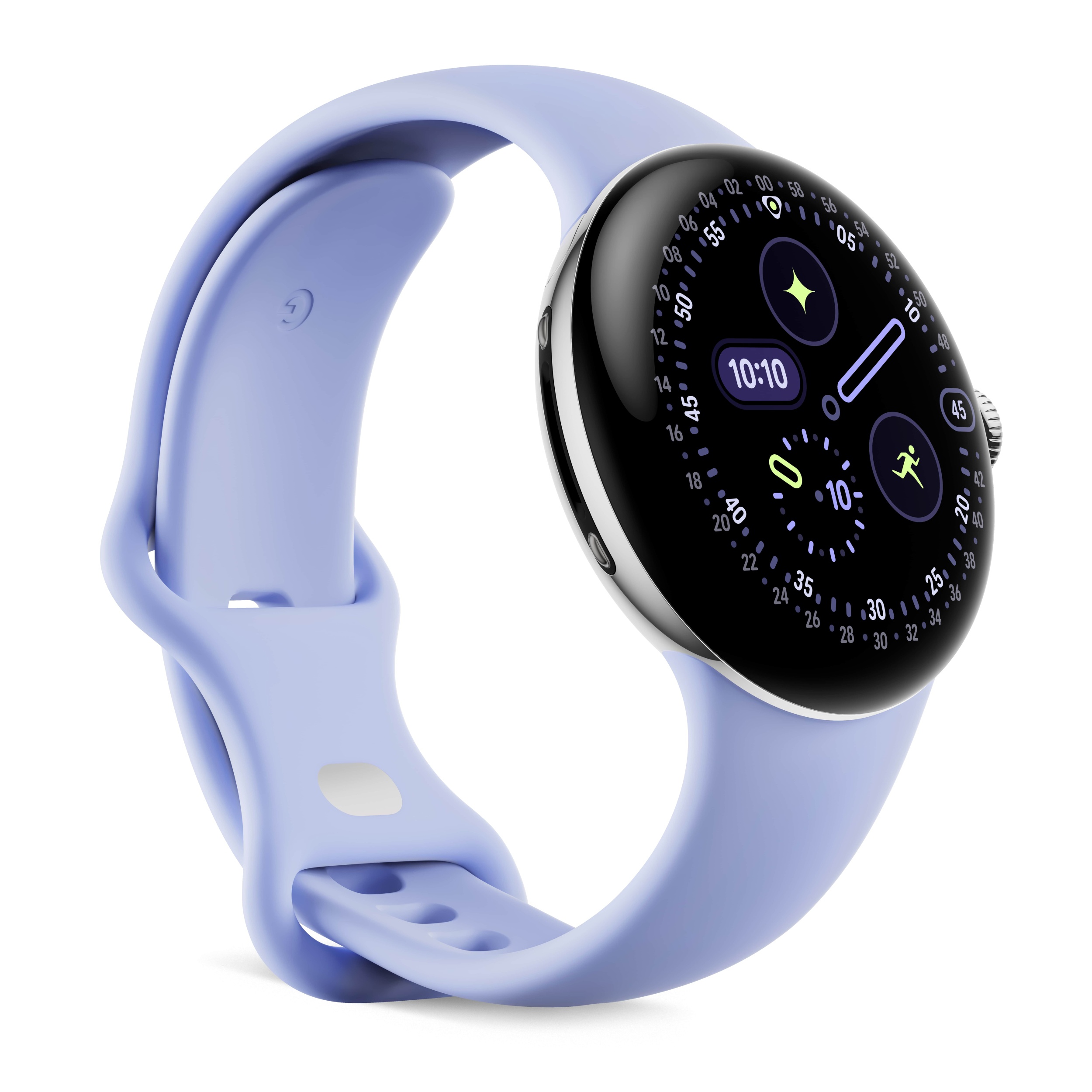
AI on your wrist
The Galaxy Watch 4 gets a new chip to keep performance smooth and add features like satellite communications and on-device AI. Plus, new fitness capabilities are coming that should get you excited.
